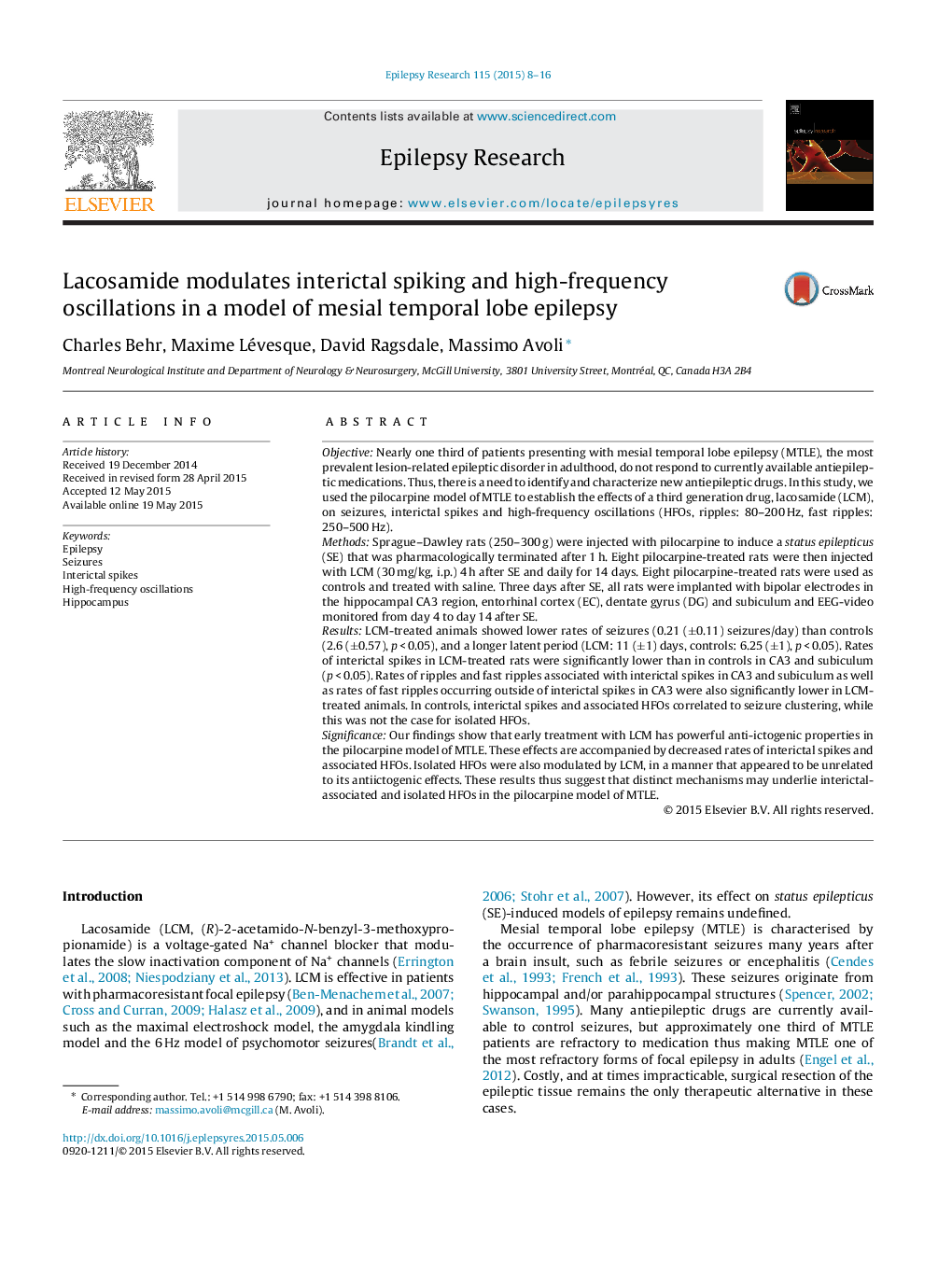| Article ID | Journal | Published Year | Pages | File Type |
|---|---|---|---|---|
| 6015267 | Epilepsy Research | 2015 | 9 Pages |
â¢We compare pilocarpine-treated animals with and without daily Lacosamide treatment (I.P., 30 mg/kg/days).â¢We use bipolar depth recordings from CA3 entorhinal cortex, subiculum and dentate gyrus.â¢We examine differences in seizures, interictal spikes and high-frequency oscillations rates.â¢Lacosamide has a strong anti-ictogenic effect and modulates rates of interictal spikes and associated HFOs accordingly.â¢Rates of isolated ripples and fast ripples were also modulated, independently from seizures.
SummaryObjectiveNearly one third of patients presenting with mesial temporal lobe epilepsy (MTLE), the most prevalent lesion-related epileptic disorder in adulthood, do not respond to currently available antiepileptic medications. Thus, there is a need to identify and characterize new antiepileptic drugs. In this study, we used the pilocarpine model of MTLE to establish the effects of a third generation drug, lacosamide (LCM), on seizures, interictal spikes and high-frequency oscillations (HFOs, ripples: 80-200 Hz, fast ripples: 250-500 Hz).MethodsSprague-Dawley rats (250-300 g) were injected with pilocarpine to induce a status epilepticus (SE) that was pharmacologically terminated after 1 h. Eight pilocarpine-treated rats were then injected with LCM (30 mg/kg, i.p.) 4 h after SE and daily for 14 days. Eight pilocarpine-treated rats were used as controls and treated with saline. Three days after SE, all rats were implanted with bipolar electrodes in the hippocampal CA3 region, entorhinal cortex (EC), dentate gyrus (DG) and subiculum and EEG-video monitored from day 4 to day 14 after SE.ResultsLCM-treated animals showed lower rates of seizures (0.21 (±0.11) seizures/day) than controls (2.6 (±0.57), p < 0.05), and a longer latent period (LCM: 11 (±1) days, controls: 6.25 (±1), p < 0.05). Rates of interictal spikes in LCM-treated rats were significantly lower than in controls in CA3 and subiculum (p < 0.05). Rates of ripples and fast ripples associated with interictal spikes in CA3 and subiculum as well as rates of fast ripples occurring outside of interictal spikes in CA3 were also significantly lower in LCM-treated animals. In controls, interictal spikes and associated HFOs correlated to seizure clustering, while this was not the case for isolated HFOs.SignificanceOur findings show that early treatment with LCM has powerful anti-ictogenic properties in the pilocarpine model of MTLE. These effects are accompanied by decreased rates of interictal spikes and associated HFOs. Isolated HFOs were also modulated by LCM, in a manner that appeared to be unrelated to its antiictogenic effects. These results thus suggest that distinct mechanisms may underlie interictal-associated and isolated HFOs in the pilocarpine model of MTLE.
